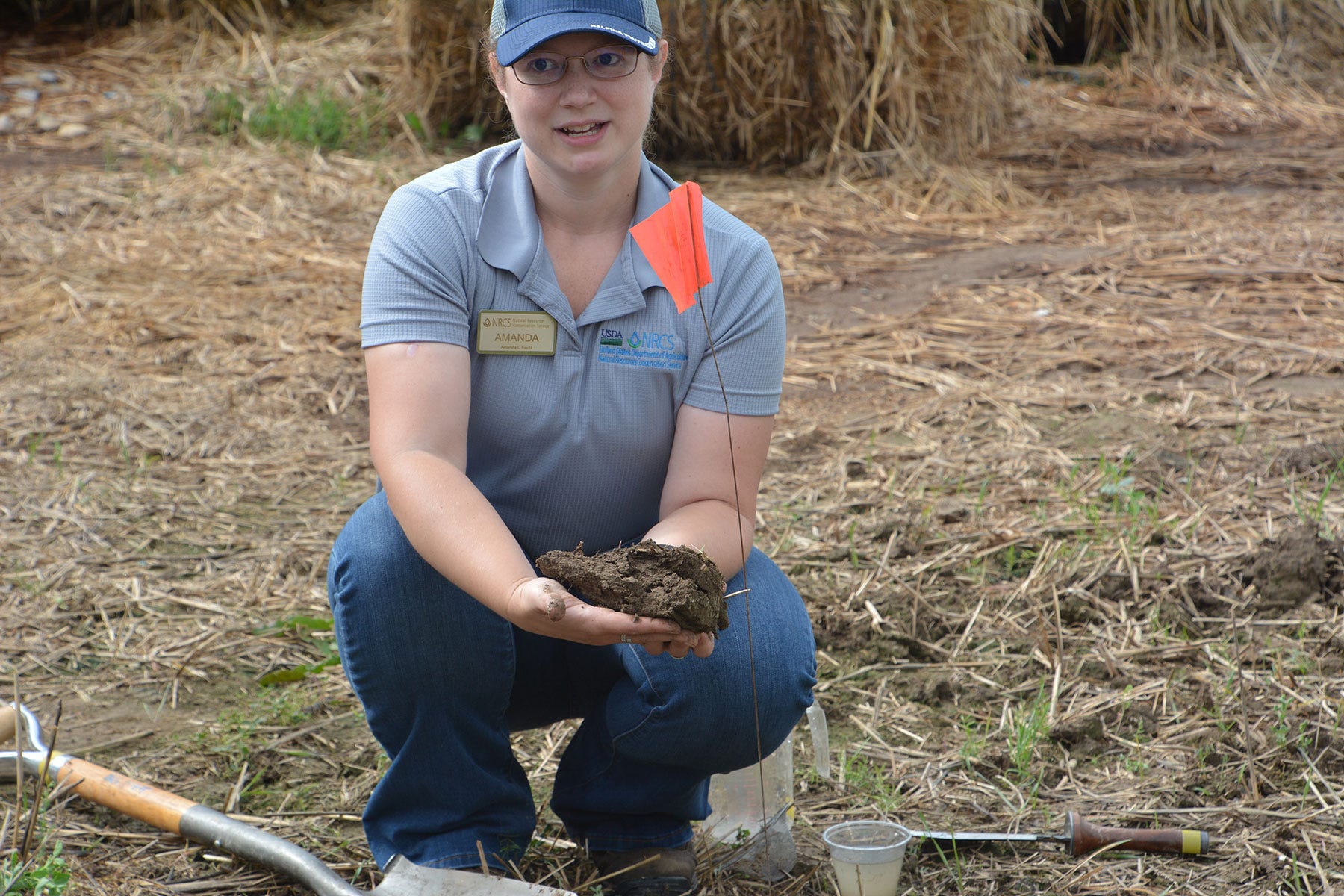
Maybe you have soils needing more tilth and structure. And perhaps the water running off your field after heavy rains is brown with sediment. If seeking to make improvements, shifting tillage and adding cover crops may be part of the solution.
“We do several demonstrations to show how long-term no-till soils with cover crops and conventionally tilled soils react differently in various situations,” said Amanda Kautz, state soil health specialist with the Natural Resources Conservation Service in Indiana, during a summer field day.
“One test is as simple as taking a clump from each field and dropping the clumps in side-by-side cylinders of water,” she said. “The conventionally tilled soil will tend to break apart quickly, and most of the soil particles wind up at the bottom of the cylinder. There is little to hold soil particles together.
“Meanwhile, the no-till soil tends to hold together because there is more structure. It stays together and does not break apart nearly as easily.”

THIS SOIL NEEDS HELP: Amanda Kautz, NRCS state soil health specialist, holds compacted soil pulled from a high-traffic area in cover crop plots. Water infiltration is still faster on this soil than many tilled soils, but it is not as good as on the loose-structured soil also found at the field day.
Kautz also did a second test, called a sump test, which showed the same properties in a different way. After making a slurry with both conventional-tilled soil and soil from a no-till field with cover crops, she flipped the cups upside down on a hard surface.
“The conventional-tilled soil just spreads out because there is nothing to hold it together,” she explains. “The no-till soil with cover crops tends to stay more intact as a clump.”
Cover crops can help
So how do you get soils with more desirable properties, including better water infiltration? One way, Kautz said, is to include cover crops in your plans. “They’re a great way to improve soil health over time,” she added.
Roger Wenning, Greensburg, Ind., planted various cover crops in summer ahead of his annual field day. By his field day in August, he had examples of cereal rye, brassicas and legumes, including hairy vetch.
Hans Kok, soil conservation consultant, noted that cover crops, in combination with no-till, over time create healthier soils with more structure. The field where Wenning planted cover crops for the field day hasn’t been tilled in years.
“We found some really good examples of soil structure near the surface,” Kok said.

COVER CROP OPTION: Robbie Zupancic with NRCS (left) hands off an example of a legume cover crop seedling to a co-worker for a closer look. Besides improving soil tilth, legumes can produce nitrogen.
Some cover crop selections, like hairy vetch, supply major amounts of nitrogen for the cash crop if allowed to grow long enough in the spring, Kok said. But Wenning gained nitrogen by growing red clover longer than other cover crops before planting green into it. The secret, both say, is developing a system that allows you to manage cover crops for your desired benefit.
Read more about:
No tillAbout the Author(s)
You May Also Like




